Introduction
Working at height is an activity that presents significant risks in numerous industries. Falls from height are a leading cause of workplace fatalities and serious injuries globally. To mitigate these risks, comprehensive training programs are essential for individuals who work at height. The OPITO Approved – Working at Height Essentials (WAHE) course is a globally recognized standard designed to equip participants with the knowledge, skills, and understanding necessary to work safely and effectively at height.
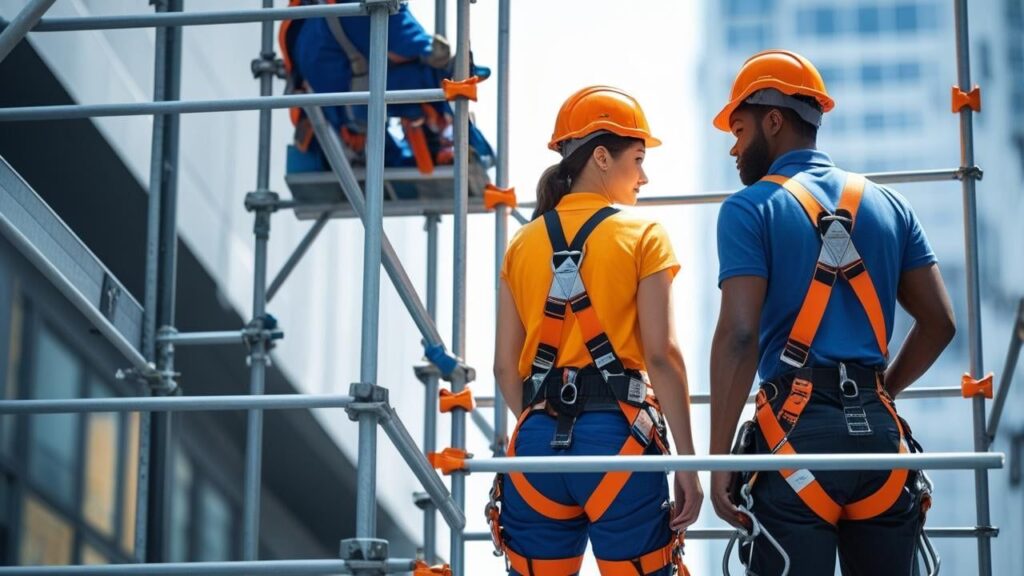
This document provides an in-depth exploration of the WAHE course, covering its objectives, syllabus, learning outcomes, assessment methods, certification process, safety protocols, equipment types, legal requirements, industry best practices, and more. This comprehensive guide aims to serve as a valuable resource for individuals considering the course, employers seeking to enhance workplace safety, and training providers delivering the WAHE program.
The following sections will provide detailed information regarding the OPITO WAHE course.
Course Objectives
The OPITO WAHE course is designed to achieve several key objectives, all aimed at promoting safety and competence in working at height environments. These objectives include:
Understanding Hazards and Risks: To enable participants to identify and understand the hazards and risks associated with working at height.
Risk Assessment and Control: To equip participants with the skills to conduct thorough risk assessments and implement effective control measures.
Safe Use of Equipment: To provide participants with the knowledge and practical skills to safely use a variety of working at height equipment, including harnesses, lanyards, and fall arrest systems.
Emergency Procedures: To train participants in emergency procedures, including rescue techniques and first aid for fall-related injuries.
Legal and Regulatory Compliance: To ensure participants are aware of the relevant legal and regulatory requirements related to working at height.
Promoting a Safety Culture: To foster a culture of safety awareness and responsibility among participants, encouraging them to prioritize safety in all working at height activities.
Detailed Syllabus.
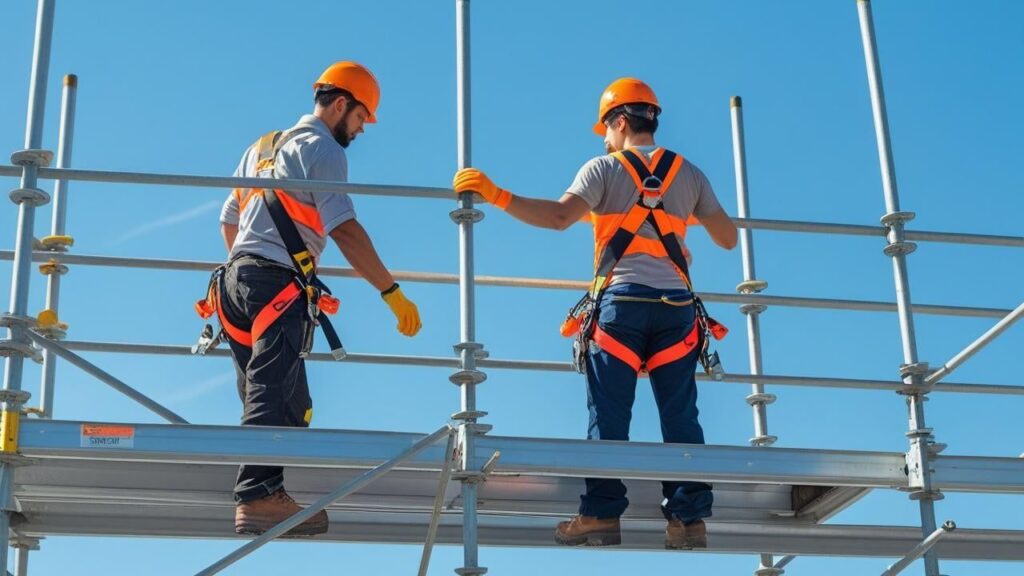
The WAHE course syllabus is structured to provide a comprehensive and practical understanding of working at height safety. The syllabus typically includes the following modules:
Introduction to Working at Height:
Definition of working at height
Statistics and consequences of falls from height
Overview of relevant legislation and standards
Hazards and Risks of Working at Height:
Identifying common hazards (e.g., fragile surfaces, unprotected edges, falling objects)
Assessing risks associated with various working at height activities
Understanding the factors that contribute to falls (e.g., human error, equipment failure, environmental conditions)
Risk Assessment and Control Measures:
Principles of risk assessment (e.g., hazard identification, risk evaluation, control measures)
Developing and implementing safe systems of work
Hierarchy of control measures (e.g., elimination, substitution, engineering controls, administrative controls, PPE)
Personal Protective Equipment (PPE):
Types of PPE for working at height (e.g., harnesses, lanyards, helmets)
Proper selection, inspection, and fitting of PPE
Limitations of PPE and the importance of other control measures
Fall Arrest Systems:
Components of a fall arrest system (e.g., anchorage points, connectors, energy absorbers)
Calculating fall distances and clearance requirements
Inspecting and maintaining fall arrest equipment
Ladders and Stepladders:
Safe use of ladders and stepladders
Inspection and maintenance of ladders and stepladders
Ladder stability and angle requirements
Scaffolding:
Overview of different types of scaffolding
Safe erection, alteration, and dismantling of scaffolding
Inspecting scaffolding for defects
Mobile Elevated Work Platforms (MEWPs):
Types of MEWPs (e.g., scissor lifts, boom lifts)
Safe operation of MEWPs
Pre-use inspections and maintenance
Work Positioning Systems:
Use of work positioning lanyards and harnesses
Proper anchorage techniques
Limitations of work positioning systems
Rope Access Techniques (Optional):
Introduction to rope access
Basic rope handling skills
Use of specialized rope access equipment
Emergency Procedures and Rescue:
Developing emergency response plans
Self-rescue techniques
Assisted rescue techniques
First aid for fall-related injuries
Legislation and Standards:
Review of relevant national and international regulations
Understanding industry best practices and guidelines
Learning Outcomes
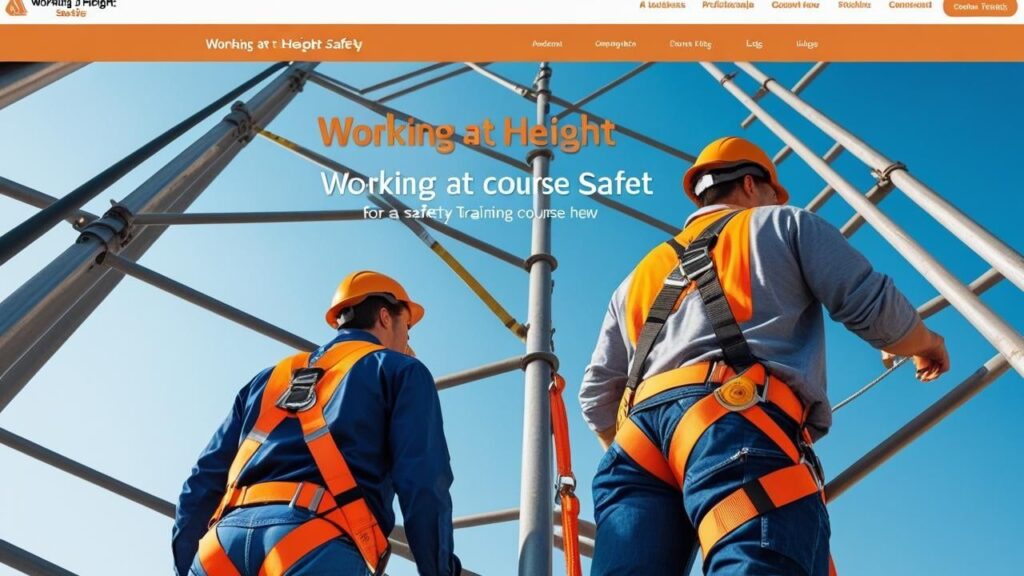
Upon successful completion of the WAHE course, participants will be able to:
Identify Hazards: Recognize and identify hazards associated with working at height.
Assess Risks: Conduct thorough risk assessments for working at height activities.
Implement Control Measures: Implement appropriate control measures to mitigate risks.
Use PPE Safely: Select, inspect, and use personal protective equipment (PPE) correctly.
Operate Equipment Safely: Operate working at height equipment safely and efficiently.
Apply Emergency Procedures: Apply emergency procedures and rescue techniques effectively.
Comply with Regulations: Comply with relevant legal and regulatory requirements.
Promote Safety Culture: Promote a culture of safety awareness and responsibility.
Assessment Methods
The WAHE course typically employs a variety of assessment methods to evaluate participants’ understanding and competence. These methods may include:
Written Examinations: Written tests to assess knowledge of theory, regulations, and procedures.
Practical Assessments: Hands-on assessments to evaluate skills in using equipment, conducting risk assessments, and performing rescue techniques.
Observation: Direct observation of participants performing tasks to assess their competence and adherence to safety protocols.
Group Discussions: Facilitated group discussions to encourage critical thinking and problem-solving skills.
Case Studies: Analysis of real-world case studies to apply learned concepts and principles.
Continuous Assessment: Ongoing evaluation of participants’ engagement, participation, and performance throughout the course.
Certification Process

Upon successful completion of the WAHE course and passing all assessments, participants will receive an OPITO-approved certificate. The certification process typically involves the following steps:
Course Completion: Participants must attend all required sessions and complete all course activities.
Assessment Passing: Participants must pass all written and practical assessments.
Verification: The training provider verifies the participant’s identity and course completion.
Certificate Issuance: The training provider issues an OPITO-approved certificate to the participant.
Certificate Validity: The certificate typically has a validity period of two years, after which recertification is required.
Safety Protocols
Adherence to strict safety protocols is paramount during the WAHE course and in all working at height activities. Key safety protocols include:
Pre-Use Inspections: Conducting thorough pre-use inspections of all equipment and work areas.
Proper Use of PPE: Ensuring proper use of personal protective equipment (PPE) at all times.
Fall Protection Measures: Implementing appropriate fall protection measures, such as guardrails, safety nets, and fall arrest systems.
Safe Systems of Work: Following established safe systems of work and procedures.
Emergency Preparedness: Being prepared for emergencies and knowing how to respond effectively.
Communication: Maintaining clear and effective communication among team members.
Housekeeping: Maintaining a clean and organized work area to prevent slips, trips, and falls.
Equipment Types and Maintenance
The WAHE course covers a wide range of equipment used for working at height. Understanding the proper use and maintenance of this equipment is crucial for safety. Common equipment types include:
Harnesses: Full-body harnesses are essential for fall arrest and work positioning. Regular inspection and proper fitting are critical.
Lanyards: Lanyards connect the harness to an anchorage point. Different types of lanyards are available, including energy-absorbing lanyards and fixed-length lanyards.
Anchorage Points: Anchorage points provide a secure attachment for fall arrest systems. They must be strong enough to withstand the forces generated during a fall.

Fall Arrest Systems: Fall arrest systems are designed to stop a fall and minimize the impact force on the worker.
Ladders and Stepladders: Ladders and stepladders are used for access to elevated work areas. They must be inspected regularly and used safely.
Scaffolding: Scaffolding provides a temporary work platform at height. It must be erected, altered, and dismantled by competent persons.
Mobile Elevated Work Platforms (MEWPs): MEWPs, such as scissor lifts and boom lifts, provide access to elevated work areas. Operators must be properly trained and authorized.
Ropes and Rigging: Ropes and rigging equipment are used in rope access and rescue operations. They must be inspected regularly and used by trained personnel.
Regular maintenance and inspection of all equipment are essential to ensure its continued safe operation. Maintenance schedules should be followed, and any defective equipment should be removed from service immediately.
Legal and Regulatory Requirements
Working at height activities are subject to various legal and regulatory requirements, which vary depending on the jurisdiction. The WAHE course provides an overview of these requirements, including:
National and Local Regulations: Understanding the specific regulations applicable to working at height in the relevant jurisdiction.
Industry Standards and Guidelines: Familiarizing with industry standards and guidelines, such as those published by ANSI, OSHA, and other organizations.
Employer Responsibilities: Understanding the employer’s responsibilities for providing a safe working environment and ensuring employees are properly trained.
Employee Responsibilities: Understanding the employee’s responsibilities for following safety procedures and using equipment correctly.
Permit-to-Work Systems: Understanding the use of permit-to-work systems for high-risk activities.
Compliance with legal and regulatory requirements is essential to avoid penalties and ensure the safety of workers.

Industry Best Practices
In addition to legal and regulatory requirements, the WAHE course emphasizes industry best practices for working at height. These practices include:
Planning and Preparation: Thorough planning and preparation before commencing any working at height activity.
Competent Personnel: Ensuring that all personnel involved in working at height are competent and properly trained.
Safe Systems of Work: Developing and implementing safe systems of work that address all potential hazards.
Continuous Improvement: Continuously reviewing and improving safety procedures and practices.
Communication and Consultation: Maintaining open communication and consulting with workers on safety issues.
Incident Reporting and Investigation: Reporting and investigating all incidents and near misses to prevent future occurrences.
Promoting a Positive Safety Culture: Fostering a positive safety culture where safety is valued and prioritized.
Case Studies
The WAHE course incorporates case studies to illustrate real-world scenarios and lessons learned from past incidents. These case studies help participants understand the consequences of unsafe practices and the importance of following safety protocols. Examples of case studies may include:
Falls from Ladders: Analyzing incidents involving falls from ladders and identifying the contributing factors, such as improper ladder placement, overloading, and lack of fall protection.
Scaffolding Collapses: Examining cases of scaffolding collapses and identifying the causes, such as inadequate bracing, overloading, and improper erection.
MEWP Accidents: Investigating accidents involving mobile elevated work platforms (MEWPs) and identifying the contributing factors, such as operator error, mechanical failure, and lack of training.
Rope Access Incidents: Analyzing incidents involving rope access techniques and identifying the causes, such as equipment failure, improper rigging, and lack of supervision.
By studying these case studies, participants can gain valuable insights and learn how to prevent similar incidents from occurring in the future.
Instructor Qualifications
The quality and effectiveness of the WAHE course depend heavily on the qualifications and experience of the instructors. Ideally, WAHE instructors should possess the following qualifications:
Extensive Experience: Significant practical experience in working at height in various industries.
Formal Training: Formal training in working at height safety and instruction techniques.
Relevant Certifications: Relevant certifications, such as OPITO instructor certification or equivalent.
Knowledge of Regulations: Thorough knowledge of relevant legal and regulatory requirements.
Communication Skills: Excellent communication and presentation skills.
Passion for Safety: A genuine passion for promoting safety and preventing accidents.
Instructors should also stay up-to-date with the latest industry best practices and advancements in working at height safety.
Participant Prerequisites
While the WAHE course is designed to provide a comprehensive introduction to working at height safety, certain prerequisites may be required for participants to ensure they can fully benefit from the training. These prerequisites may include:
Age Requirement: Minimum age requirement (e.g., 18 years old).
Medical Fitness: Medical fitness to work at height, including the ability to climb and work in exposed environments.
Literacy and Language Skills: Adequate literacy and language skills to understand course materials and instructions.
Basic Understanding of Safety Principles: A basic understanding of general safety principles.
Specific Industry Requirements: Depending on the industry, specific requirements, such as previous experience or training.
Course Duration
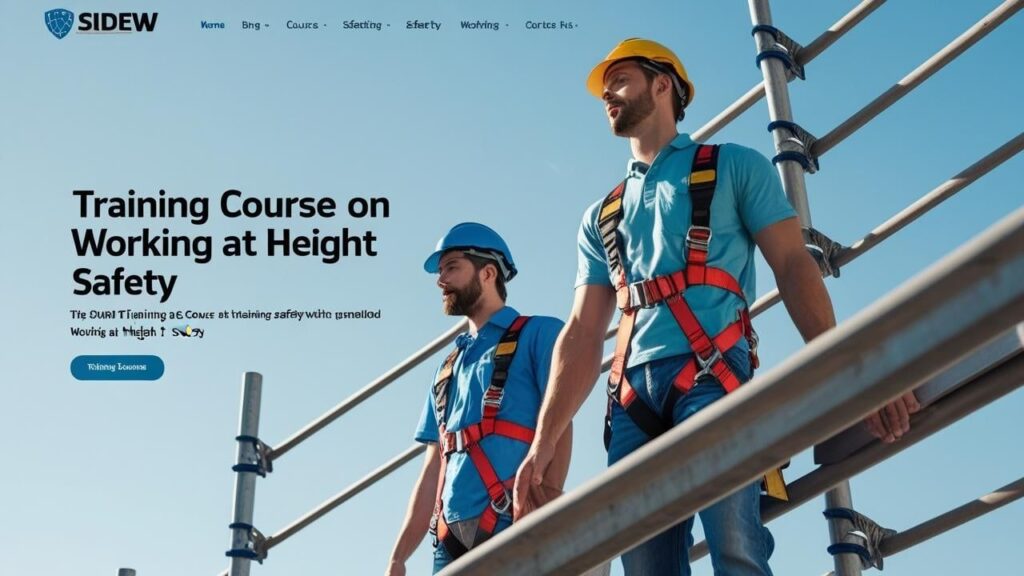
The duration of the WAHE course can vary depending on the training provider and the specific modules covered. However, a typical WAHE course lasts between 2 to 3 days. This duration allows for adequate time to cover the theoretical concepts, practical skills, and assessment requirements. Refresher courses are shorter, usually lasting 1 day.
Delivery Methods
The WAHE course can be delivered using a variety of methods, including:
Classroom-Based Training: Traditional classroom-based training with lectures, discussions, and practical exercises.
Online Training: Online training modules with interactive content, videos, and assessments.
Blended Learning: A combination of classroom-based and online training.
On-Site Training: Training delivered at the client’s premises, using their equipment and facilities.
The choice of delivery method depends on the training provider’s capabilities and the client’s needs and preferences. Practical exercises are an essential component of the WAHE course, regardless of the delivery method.
Post-Course Support
Many training providers offer post-course support to participants to reinforce their learning and provide ongoing assistance. This support may include:
Access to Online Resources: Access to online resources, such as course materials, videos, and FAQs.
Helpline Support: Telephone or email helpline support to answer questions and provide guidance.
Refresher Training: Opportunities to attend refresher training courses to maintain competence.
Updates on Regulations and Best Practices: Regular updates on changes to regulations and industry best practices.
Networking Opportunities: Opportunities to network with other professionals in the field.
Post-course support can be invaluable in helping participants apply their knowledge and skills in the workplace.
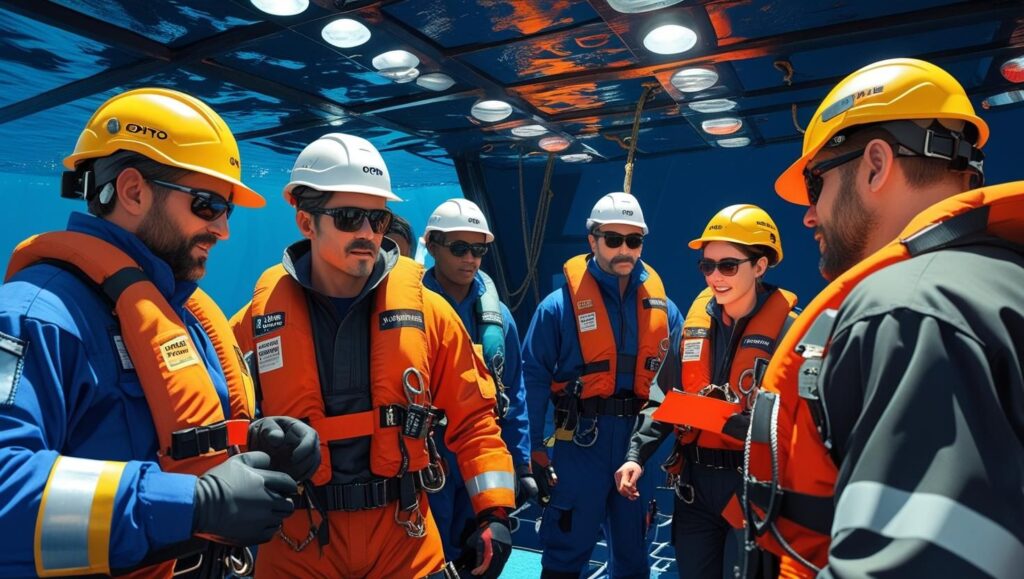
Relevance to Various Industries
The OPITO WAHE course is relevant to a wide range of industries where working at height is a common activity. These industries include:
Oil and Gas: Offshore platforms, refineries, and pipelines.
Construction: Building construction, maintenance, and demolition.
Renewable Energy: Wind turbine maintenance and installation.
Telecommunications: Cell tower maintenance and installation.
Manufacturing: Factory maintenance and equipment installation.
Utilities: Power line maintenance and repair.
Entertainment: Stage rigging and event production.
Mining: Above ground mining operations and maintenance.
Workers in these industries face significant risks of falls from height, and the WAHE course provides them with the knowledge and skills to work safely and effectively.
Conclusion
The OPITO Approved – Working at Height Essentials (WAHE) course is a critical investment in workplace safety. By providing participants with the knowledge, skills, and understanding necessary to work safely at height, the WAHE course helps to reduce the risk of falls and injuries. This comprehensive guide has explored the various aspects of the WAHE course, including its objectives, syllabus, assessment methods, certification process, safety protocols, equipment types, legal requirements, and industry best practices. By adhering to the principles and practices outlined in the WAHE course, employers and workers can create a safer and more productive working environment.


